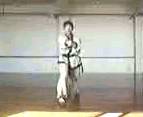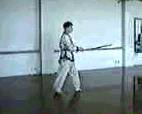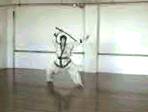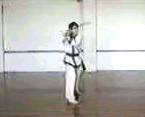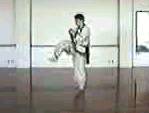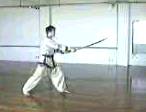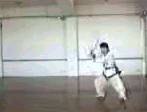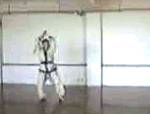Gyongdang
..................................![]() Overview
Overview
![]() PKG Tours
PKG Tours
![]() Video Clips
Video Clips
..................................
![]()
Jeju Championship

¢Ñ Tour Courses | ¢Ñ Training | ¢Ñ Demonstration
![]() 6N7D
6N7D
-D1 : Arrival
and Transfer to Hotel
-D2 :
Full day city tour including
Palace, Museum, Open market, Martial art supply shopping
-D3 : Visit
Gwangju Gyongdang HQ and
orientation with demonstration
-D4 : Morning
training and half day city tour
-D5 : Morning
training and half day tour of suburban historical sites
-D6 : Transfer
to Seoul and free at leisure
-D7 : Free
at leisure and transfer to airport
![]() 13N14D
13N14D
-D1
: Arrival
and Transfer to Hotel
-D2 :
Full day city tour including
Palace, Museum, Open market, Martial art supply shopping
-D3
: Visit
Gwangju Gyongdang HQ and
orientation with demonstration
-D4~D9 : Morning training and half day suburban culture
tour
-D10 :
Sparring and competition
-D11
: Final
training and evaluation
-D12 : Tour
to the Liberation memorial hall, Yongin folk village or Everland theme park and enroute
to
Seoul
-D13 :
Full day free at leisure
-D14
: Free
at leisure and transfer to airport
PKG TOURS
¢º Mu-Ye-Yi-Sip-Sa-Ban
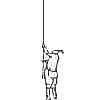 Jang Chang
(long spear)
Jang Chang
(long spear)
The Jang Chang is a
five foot long spear made from the wood of the yew tree.
It
can also be made from a similarly soft wood, including bamboo in
the right climate. It was considered the most effective conventional
weapon on the battlefield due to its flexibility and length. The
Jang Chang was widely used in the battle to retake Pyong-yang Fortress
during the 1592 war between Joseon (Korea) and Japan.
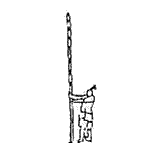
Juk Jang Chang (long bamboo spear)
The Juk Jang Chang is
a twenty foot long spear made of bamboo and tipped with
a four
inch long blade. The primary advantage of the Juk Jang Chang on
the battlefield was its length and sharp blade, making it suitable
for fighting many enemies simultaneously.
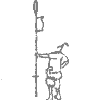 Gi Chang
(flag spear)
Gi Chang
(flag spear)
The Gi Chang is a flag
spear, a nine foot long staff with a nine inch long blade at the
end. The colored flag, attached at the end of the spear just below
the blade, was used to create confusion in battle. Troops surrounded
the enemy and waved the flags vigorously during an attack. It was
also used to encourage the troops, like a rallying cry, in battle.
The strength of the Gi Chang was its ability to make deceptive
attacks and sudden directional changes to attack the center of the
enemy's line.
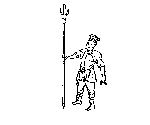
Dang Pa (triple tip spear)
The Dang Pa is a triple bladed spear, sometimes called a trident. It is between seven feet, six inches and eighteen feet long and has either an iron or wooden tip. The dang pa was a fundamental defensive weapon that was sometimes used to launch fire at enemy troops.
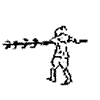 Nang Sun
(multiple tip bamboo spear)
Nang Sun
(multiple tip bamboo spear)
The Nang Sun is a fifteen foot long spear made of either bamboo or iron. It has nine to eleven branches extending out from the main shaft, each studded with small metal hooks. This deadly weapon was invented by Chuk Kye-kwang during the 1592 war with Japan.
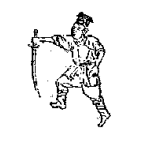 Ssang Su Do
(long sword)
Ssang Su Do
(long sword)
The Ssang Su Do is a six foot five inch long sword from Japan. It is so powerful, that it can cut or break another sword upon striking it. Japanese gunmen also used this sword as a sidearm for close range combat. The Ssang Su Do is also known as the Jang Do, Yong gum or Pyong gum.
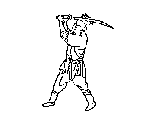
Ye Do
(short sword)
The Ye Do is a short
sword, four feet four inches in length, that is also known as
a dan do. It was used for training soldiers in swordsmanship.
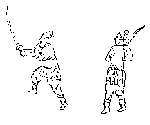 Wae Gum
(Japanese sword)
Wae Gum
(Japanese sword)
Japanese swordsmanship was clearly recognized as superior to that of the sword techniques of China or Joseon in the 16th century, so King Sukjong ordered Kim Che-gun to acquire the techniques and text books of the Japanese. Four styles of 16th century Japan are recorded in the Wae Gum section of the Mu-Ye- Do-Bo-Tong-Ji: Toyu Ryu, Woonkwang Ryu, Chunryu Ryu, and Ryupee Ryu.
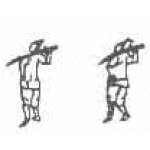 Gyo Jeon (combat engagement)
Gyo Jeon (combat engagement)
Gyo Jeon is a Japanese method of practicing swordsmanship with a training partner. In the original Japanese text book, techniques were documented with a double bladed sword, but Joseon soldiers practiced with the single bladed sword to prevent injury.
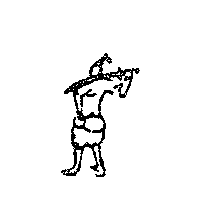 Je Dok Gum
(admiral¡¯s sword)
Je Dok Gum
(admiral¡¯s sword)
Je Dok Gum, literally
translated as the Admiral's sword, is a method of sword combat developed
by Chinese Admiral Yi Yu-song. Admiral Yi was a descendant of Korean
lineage and was stationed in Korea during King Sinjong's reign.
The Je Dok Gum was characterized by spinning movements, which
were used to break free when a soldier was encircled on the battlefield.
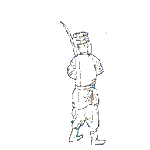
Bon Guk Gum (Shilla Kingdom sword)
The Gon Guk Gum is a
native Joseon sword style as proven by its mention in the legend
of Hwang-chang, a Shilla Hwarang warrior. There is evidence that
both Japan and China adapted some of the techniques of the Bon Guk
Gum.
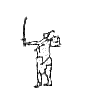 Ssang Gum
(a pair of swords)
Ssang Gum
(a pair of swords)
The Ssang Gum are single-bladed twin swords of any length (most commonly short swords, like the Yo do). The original swords were two feet, ten inches long, but in later years, there was not a specific type of sword prescribed for practice. The Ssang Gum were used in such a way, that one sword could be used to block an opponent's attack while the other was used to attack with a counter-strike.
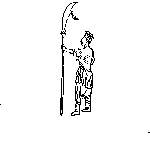 Wol Do
(crescent sword)
Wol Do
(crescent sword)
The Wol Do is a nine foot long crescent sword. Its blade is moon shaped, with a small blade projecting below the main blade. The smaller blade has a feather tied to it. Although a fearsome looking weapon, it was used primarily for practice among infantry soldiers, having been considered too weak for use in battle.
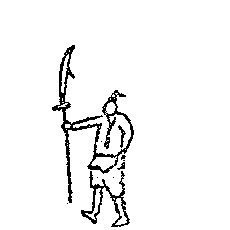 Hyop Do
(spear sword)
Hyop Do
(spear sword)
The Hyop Do is a spear sword with a three foot long handle. It resembles the Wol Do but with a single, thinner blade. It was rarely used in battle, because it was considered, like the Wol Do, to be too weak.
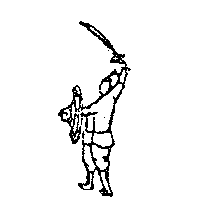 Deung Pae
(a sword wisteria-shield)
Deung Pae
(a sword wisteria-shield)
The Deung Pae is the sword and shield art. The sword, used for attacking, was primarily a short sword, such as the Yo Do. The shield was three feet seven inches in diameter and was most commonly made of woven wisteria branches (in the south) or willow branches wrapped in leather (in the north). It was used by the infantry to defend against a variety of weapons including the dart spear and bird gun.
 Gwon Bop
(fist fighting method)
Gwon Bop
(fist fighting method)
Gwon Bop is the only empty handed fighting method of the twenty-four. It was practiced as both an empty handed self-defense skill and as preparation for learning the more complicated sword arts. There were both external and internal styles of practice.
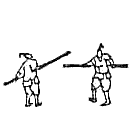 Gon Bang (a
long club with a small edge)
Gon Bang (a
long club with a small edge)
The Gon Bang is a seven foot long stick with a two inch wide duck bill shaped blade at the end. It was used to stab (like a spear) or strike (like a stick) enemies and was especially effective against the Deung Pae.
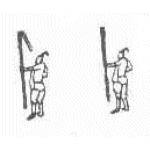 Pyon Gon
(flail method)
Pyon Gon
(flail method)
The Pyon Gon is a flail, an eight foot long staff with a two foot long club attached to the end of it by a chain or metal ring. The Pyon Gon looks similar to a nuchaku except that one segment is much longer than the other whereas the nuchaku's sticks are equal in length. It was often used to club enemies attempting to scale the walls of a castle or fortress.
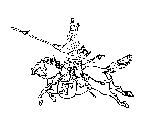
Gi Chang (spear fighting on horseback)
Gi Chang is the art of using the Jang Chang (long spear) on horseback. The spear is fifteen feet long and the cavalry troops often practiced for combat by thrusting the spear into rice straw dummies or participating in duels.
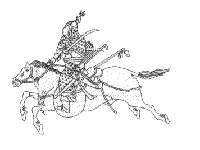 Masang
Ssang Gum (twin swords on horseback)
Masang
Ssang Gum (twin swords on horseback)
Masang Ssang Gum is
the use of the twin swords on horseback. Dan dos, short swords carried
as side arms, were used.
The famous warrior, Jin An, used seven
foot long swords in combat on horseback but he was an exception.
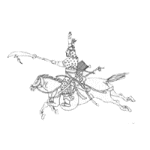 Masang Wol Do
(crescent sword on horseback)
Masang Wol Do
(crescent sword on horseback)
Masang Wol do is the use of the crescent sword on horseback. In the 16th century war with the Japanese, the Masang Wol do was instrumental in repelling the Japanese invaders. After the war King Sinjong built a monument in Seoul in memory of General Gwan Woo who was credited with the first use of the Wol do.
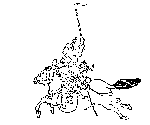 Masang Pyon Gon
(flail method on horseback)
Masang Pyon Gon
(flail method on horseback)
The Pyon Gon used on
horseback has a longer chain than that used by the infantry, allowing
the mounted combatant to strike enemies on the ground. The stick
at the end of the chain is studded with iron nails or other sharp
protrusions
to inflict fatal wounds on impact.
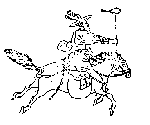 Gyok Gu
(ball game on horseback)
Gyok Gu
(ball game on horseback)
Gyok Gu is a game similar
to polo. Contestants on horseback use long handled mallets to strike
a small leather ball. It was used to train soldiers and horses for
mounted combat and to test the skills of the riders.
Gyok Gu
games were often surrounded by a great deal of ceremony and attended
by royalty.
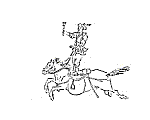 Masang Jae (horsemanship)
Masang Jae (horsemanship)
Masang Jae is a system of acrobatic techniques on horseback. The skills were primarily used to deceive the enemy in combat by hiding the body under the horse or playing dead. Other skills were used to allow the rider to attack the enemy, such as standing on the saddle to shoot the enemy with the three muzzle gun. The techniques were originated by Suk Ho-ui who was said to be as agile as a monkey riding a horse.
¢º Gyok Gum
¢º Bae Gi
¢º Gwon Bop
![]() For further information
or to make a reservation, please contact us :
For further information
or to make a reservation, please contact us :
happy@iculturetour.com / Tel : 82-2-878-3977 / Fax : 82-2-871-3464

